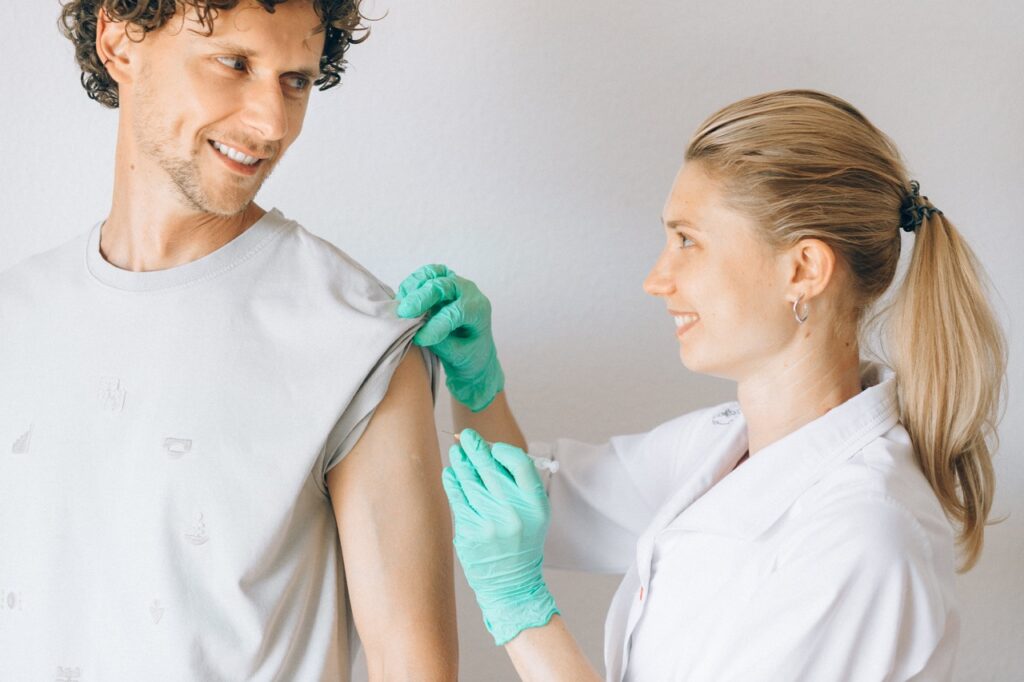In the wake of recent global health crises, the spotlight has turned to the crucial role of vaccines in safeguarding public health. This article delves into the intricate world of vaccine development, unraveling the complexities and collaborative efforts that fuel global immunization campaigns.
The Birth of a Vaccine: A Multi-Stage Journey
- Research and Discovery: The journey begins in research labs, where scientists identify antigens capable of eliciting an immune response. This phase involves understanding the pathogen’s biology and determining the most effective way to trigger immunity without causing the disease.
- Preclinical Testing: Before testing on humans, vaccines undergo rigorous preclinical trials using cell cultures and animal models. This stage assesses the potential efficacy and safety, setting the stage for clinical trials.
Clinical Trials: Ensuring Safety and Efficacy
- Phase I Trials: Small groups of volunteers receive the vaccine to evaluate its safety and determine the appropriate dosage. Researchers monitor for adverse effects and immune responses.
- Phase II Trials: This phase expands the participant pool, focusing on the vaccine’s efficacy. It involves a more diverse population to assess the vaccine’s performance across different demographics.
- Phase III Trials: Involving thousands of participants, this phase rigorously tests the vaccine’s effectiveness in a real-world scenario. It’s crucial for detecting rare side effects and establishing confidence in its safety.
Regulatory Review and Approval: Post-trial, vaccine developers submit their data to regulatory bodies like the FDA or EMA. These organizations review the data meticulously to ensure the vaccine meets stringent safety and efficacy standards before granting approval.
Manufacturing and Quality Control: Once approved, vaccines enter mass production. This stage demands stringent quality control measures to ensure every vaccine dose is safe and effective. The manufacturing process adheres to Good Manufacturing Practices (GMP) to maintain high standards.
Global Distribution and Immunization: Vaccine distribution is a logistical feat, requiring a cold chain to maintain vaccine potency. Global collaborations, like COVAX, play a pivotal role in ensuring equitable access to vaccines, especially in low-income countries.
Monitoring and Surveillance: Even after deployment, vaccines are continuously monitored for effectiveness and safety. This surveillance helps identify any long-term effects and guides the development of updated or booster doses if necessary.
Challenges and Future Directions:
- Adapting to Emerging Pathogens: The ever-evolving nature of viruses like SARS-CoV-2 necessitates ongoing research and adaptation of vaccines.
- Addressing Vaccine Hesitancy: Combatting misinformation and building public trust remains a significant challenge in global immunization efforts.
- Next-Generation Vaccines: Future research focuses on developing universal vaccines, like a universal flu vaccine, and harnessing mRNA technology for rapid response to new pathogens.
Conclusion: Vaccine development is a testament to human ingenuity and collaboration in the face of global health challenges. As we advance, the lessons learned from recent successes and challenges will undoubtedly shape the future of immunization and public health. Through continued innovation and global cooperation, vaccines will remain our most powerful tool in the fight against infectious diseases.
Note: This article is intended for educational purposes and should not replace professional medical advice. For specific health concerns or questions about vaccines, consulting a healthcare professional is recommended.








